Possibly as early as 1877 Justin H. Sisson, who owned a local inn and tavern, was raising trout and salmon as a draw to keep visitors at his tavern. In 1888 the California Fish Commission bought the hatchery. With the construction of the Shasta Dam on the Upper Sacramento River beginning in 1938, salmon could no longer travel to Mount Shasta Hatchery, and the hatchery switched over to other species. During its tenure, the hatchery has raised many types of trout, salmon, arctic grayling, largemouth bass, sunfish, perch, catfish and sturgeon.
Mount Shasta Hatchery also supplies most of the eggs to other CDFW trout hatcheries and at one time to many countries around the world. Mount Shasta Hatchery has shipped trout eggs to Mexico, New Zealand, China, India, Pakistan, The Philippines and Bangladesh, and several other US states including Hawaii. It is believed that in more than a century of operation; Mount Shasta Hatchery has produced more salmon and trout than any other hatchery in the world.
Eggs are currently shipped in Styrofoam containers with ice to keep temperatures consistent. In the past, shipping containers were built from plywood holding 20 trays and ice was placed on top to keep eggs moist as the ice melts.
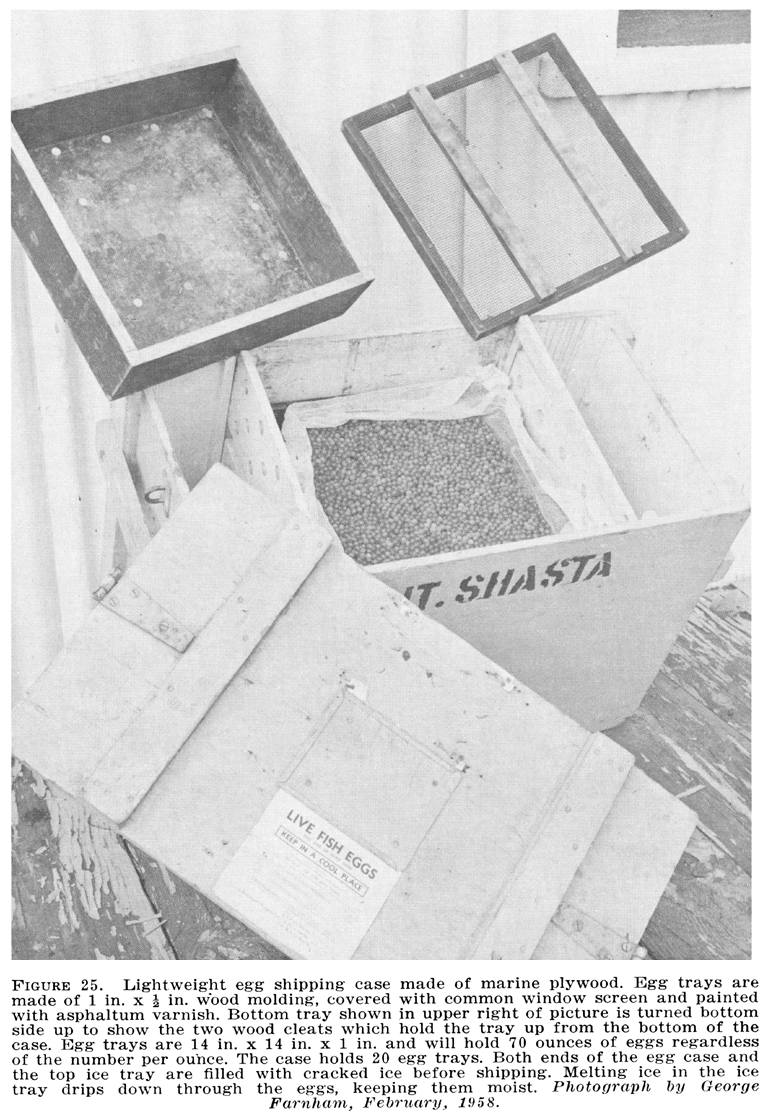 Hitoric plywood egg shipping container
Hitoric plywood egg shipping container
Dead eggs are removed prior to shipment. The eggs are first run through a small machine that uses an electronic eye and small puffs of air to gently separate the bad from good eggs, then any remaining dead eggs are removed by hand using a bulb picker. Eggs are then packed into shipping containers for shipment.
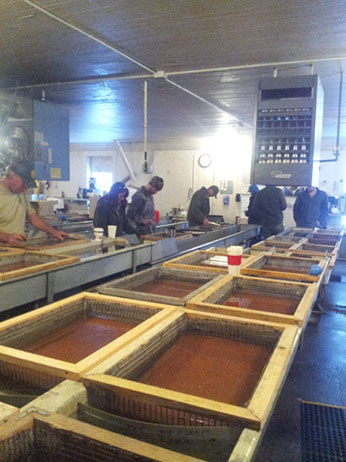 Picking bad eggs from baskets circa 2011
Picking bad eggs from baskets circa 2011
Originally, the hatchery had one building with 66 rearing troughs, and for the first few years, production was limited to a few thousand fish a year.
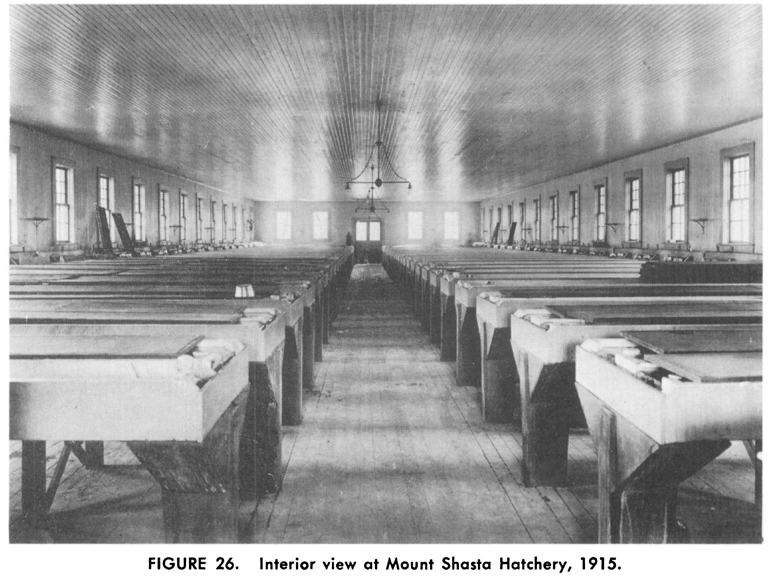 Mt Shasta Hatchery 1915
Mt Shasta Hatchery 1915
In 1909 Hatchery Building A was built, and production was increased to nearly 66 million trout and salmon eggs a year.Hatchery A is still standing today, and was renovated in 1983 to house the Mount Shasta Sisson Museum.
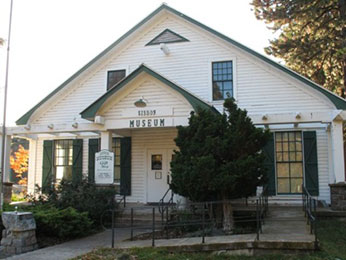 Sisson Museum; formally Hatchery Building A
Sisson Museum; formally Hatchery Building A
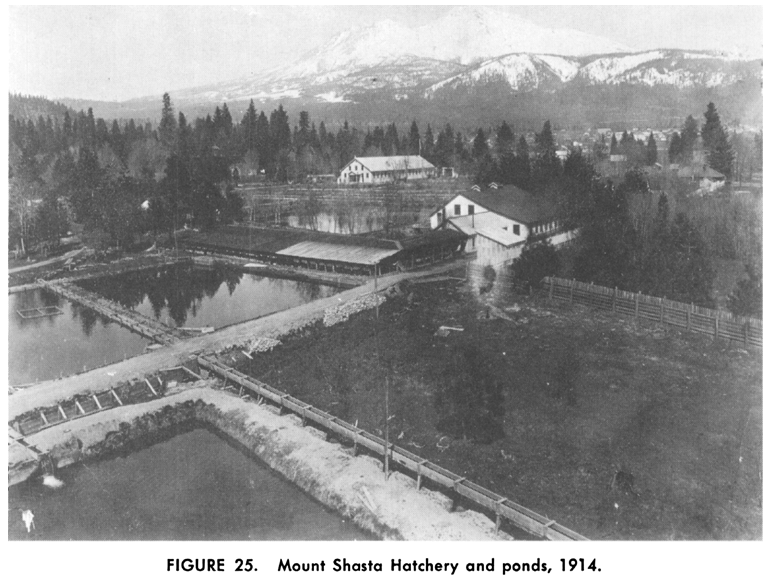 Mt Shasta Hatchery 1914
Mt Shasta Hatchery 1914
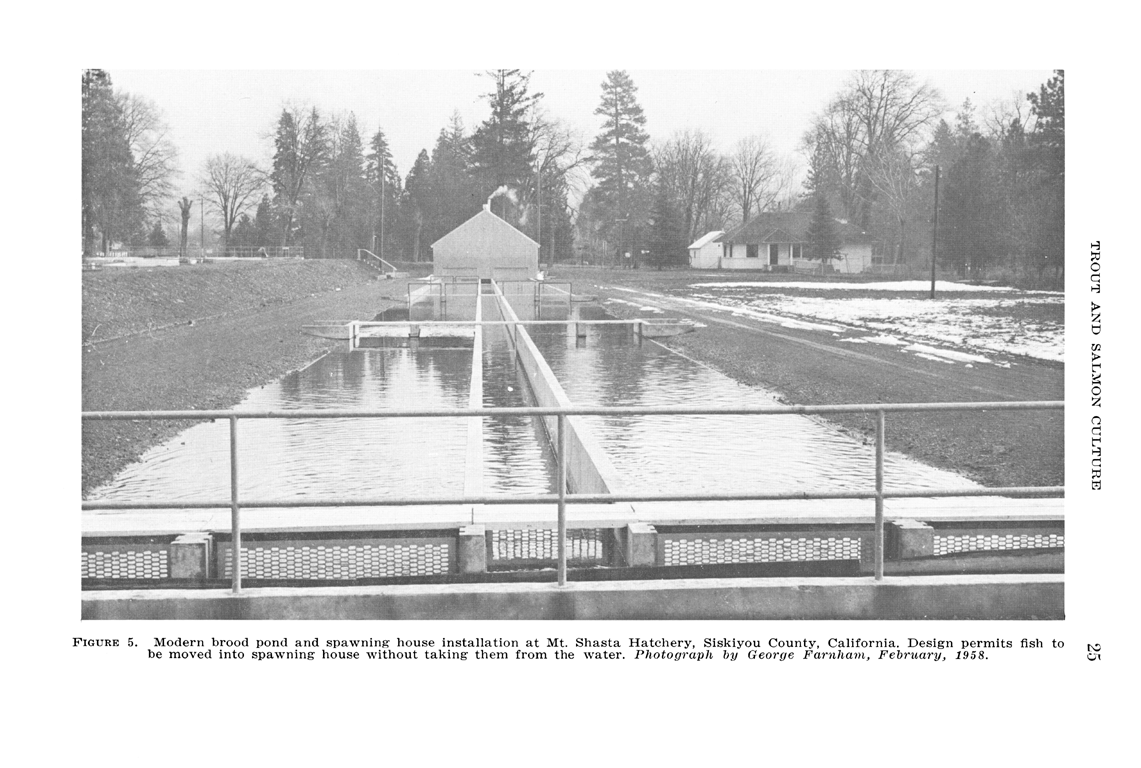 Mt Shasta Hatchery 1958
Mt Shasta Hatchery 1958
Currently Mount Shasta Hatchery has two hatchery buildings used to raise fry to a size suitable for planting. There are two earthen raceways to raise catchable trout and 4 concrete raceways to hold brood stock. Originally brood stock was held in 60 earthen ponds, and fry raised in 5 hatchery buildings. In 1950 a major overhaul of the facility was conducted and all of the old ponds were replaced with raceways and 3 of the hatchery buildings eliminated. Some of these raceways were converted to concrete raceways existing today.
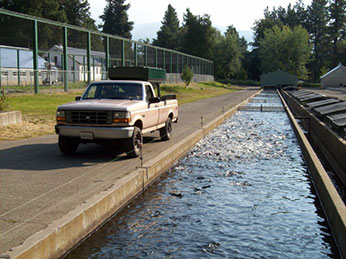 Feeding fish circa 2011
Feeding fish circa 2011
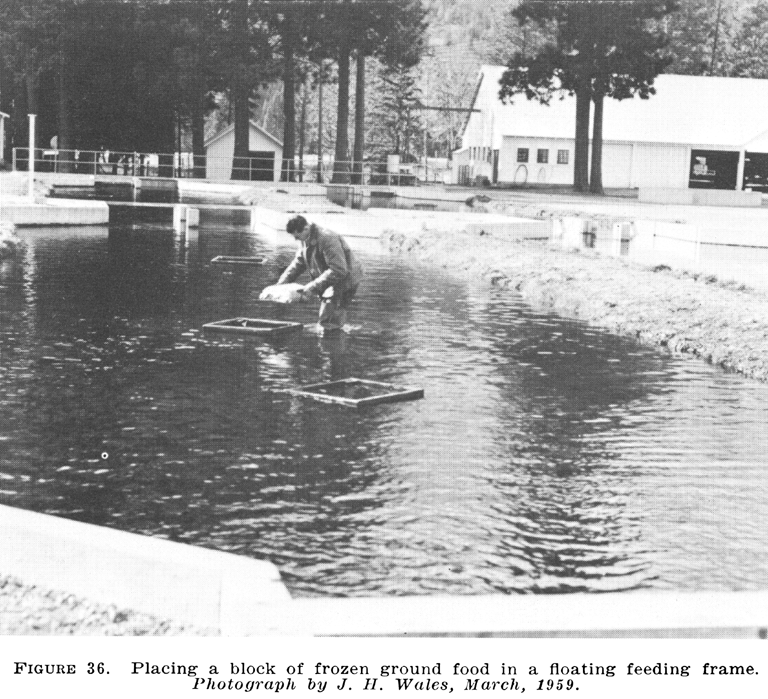 Feeding fish 1959
Feeding fish 1959
Unlike most hatcheries Mount Shasta Hatchery still utilizes earthen ponds to raise catchable trout; one of the last hatcheries CDFW to do so. The rock sides and gravel bottom better simulate a natural environment than concrete raceways.
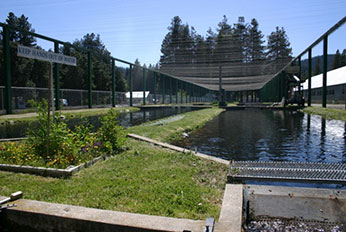 Earthen ponds at Mt Shasta circa 2011
Earthen ponds at Mt Shasta circa 2011